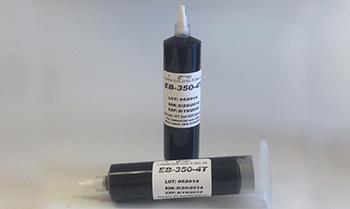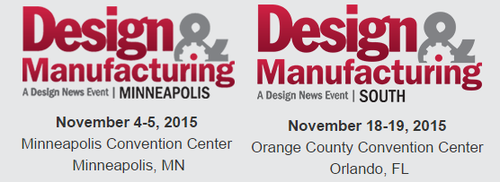October 27, 2015

Choosing the best adhesive for a specific application can be complex. There are many variables to be considered and numerous types of chemistries with different capabilities. An understanding of the following parameters will help narrow the choices. Selecting the correct adhesive will reduce the number of products to be evaluated and increase the likelihood of success.
1. Substrates: Knowing the materials to be bonded is very important. Certain adhesives may adhere better to ceramic or glass. "Metal" and "plastic" are generic terms that encompass many different types of materials, so knowing the exact substrate is essential for determining the correct adhesive. For example, ABS and polytetrafluoroethylene (Teflon) are both plastics, but PTFE requires an acid etch to achieve a bond whereas ABS can usually be bonded with just an alcohol cleaning.
2. Cleanliness of the parts: Most adhesives require that the substrates be prepared properly. Whether it's just a simple cleaning or the ability to do more complex operations (such as abrasion, chemical etch, or plasma treatment) will all come into play in selecting an adhesive.
3. Viscosity: The viscosity must be considered. Low viscosity (thin) products are best for thin bonds or for applications requiring wicking. Thixotropic materials (won't run) are best for use in vertical applications.
4. Thermal cure versus UV cure: UV cure adhesives are usually one part and can be cured quickly. They must be exposed to UV light to cure, so at least one of the substrates must allow transmission of UV light. Thermal cure materials can be cured at room temperature and/or with heat. Heat-cured thermal adhesives can require high temperatures, which might be detrimental to components, but, in general, they will cure faster with higher properties.
READ MORE ARTICLES ON ADHESIVES:
5. Working life: Determine how much work life is desired. Remember that working life (time before the material gels) is generally related to cure time. For thermal cure materials, the longer the working life, the longer the cure time (at room temperature) usually. Single-part UV-cured materials can be cured quickly, and the working life doesn't apply.
6. Configuration: The dimensions of the parts and how they fit together are very important to determining the best material. Larger parts and thicker bond gaps may require a slower cure to reduce shrinkage. Certain adhesives are designed to work best with thinner gaps.
7. Required Performance: Some factors that should be understood before selecting an adhesive:
Does the adhesive need to form a structural bond?
Ideally, a structural bonding material will create a finished part that is as strong as the substrates. As stated earlier, knowledge of the composition of the substrates helps decide the best adhesive and preparation to accomplish an ultimate bond. Also, understanding the configuration of the parts to be bonded will determine the types of adhesives for use. With most adhesives the larger the surface area of the mated parts, the stronger the bond.
The bond gap is also critical. Various adhesive chemistries work best with certain gaps. In general, cyanoacrylates and anaerobics need the thinnest bond line whereas epoxies and urethanes are better with thicker gaps. Every chemistry can vary, depending upon how they were formulated, but these are general rules.
How much mechanical stress will there be on the bond during use?
This may seem obvious, but the forces on the adhesive joint and the direction of those forces have a major impact on the adhesive to be used. Some chemistries may have excellent tensile strength (strength in a horizontal direction) and very little shear strength (strength in a vertical direction). Other considerations would be whether there are any compressive forces or torsion on the joint. Adhesives may be formulated to be more flexible or with fillers to compensate for these stresses.
Will stresses be consistent or intermittent?
Some adhesives can take extreme stresses for very short periods but not withstand the stress over longer periods. Others may hold up to long consistent stress as long as it is not brought on suddenly.
Other types of stresses may also be of concern. For example, autoclaving is a standard practice in many industries. Many adhesives cannot withstand autoclaving. It is important to consider all stresses when selecting adhesives.
What are the temperature requirements during processing and use?
This can be an extremely important parameter. Materials with low-temperature cures may not withstand high temperatures during use. Adhesives designed for high-temperature uses might only cure with heat, so the adhesive will have to be exposed to dry heat (an oven or a heat element).
The exposure temperatures during use are critical. Also consider whether the parts will be temperature cycled. Many materials that will withstand high temperatures will crack when cycled to low temperatures, and low-temperature materials might lose their strength at high temperatures.
What optical properties (if any) are important?
Optical properties may be important for certain applications. If light transmission is important, we must know the wavelength being transmitted and the duration. You may also want to consider the refractive index of the substrates. Certain chemistries will not remain clear over long exposure to UV radiation.
Does the cosmetic appearance matter?
Some adhesive chemistries can be easily colored but others cannot. Some chemistries will have lot-to-lot variations, so the final appearance can change. In applications requiring specific colors (especially for consumer products), it may be necessary to ensure that lots can be color-matched.
These are some of the more important issues, although for any specific application, there can be other considerations before selecting the right candidate. It is not often feasible to know all required parameters before choosing, but it is important to have as much information as possible to make an educated decision. There is no substitute for sampling and evaluating a product. Testing often reveals previously unconsidered parameters.
Speaking to experts is always useful. At Epoxyset, we encourage you to speak with our technical team to assist in choosing the best adhesive for your application.

Design News will be in Minneapolis and Orlando in November! Design & Manufacturing Minneapolis will take place Nov. 4-5, while Design & Manufacturing South will be in Orlando Nov. 18-19. Get up close with the latest design and manufacturing technologies, meet qualified suppliers for your applications, and expand your network. Learn from experts at educational conferences and specialty events. Register today for our premier industry showcases in Minneapolis and Orlando
Barry Siroka is business development manager for Epoxyset, a leading supplier of custom formulated adhesives and potting compounds used in advanced technology applications.
[image via Epoxyset]
About the Author(s)
You May Also Like





